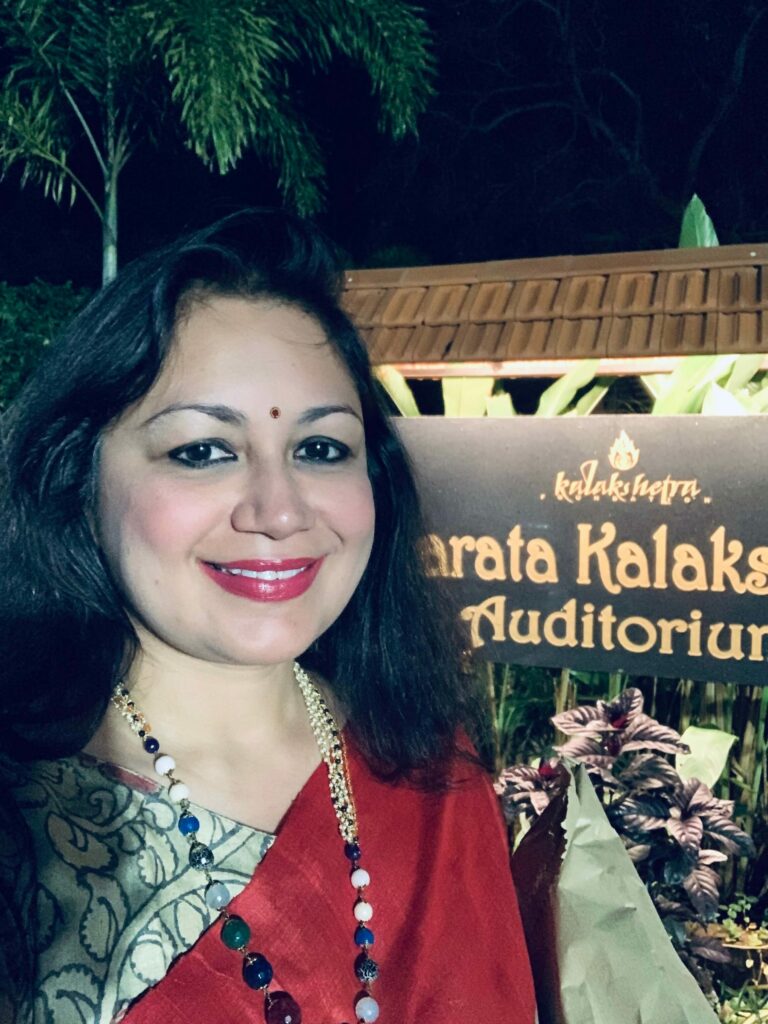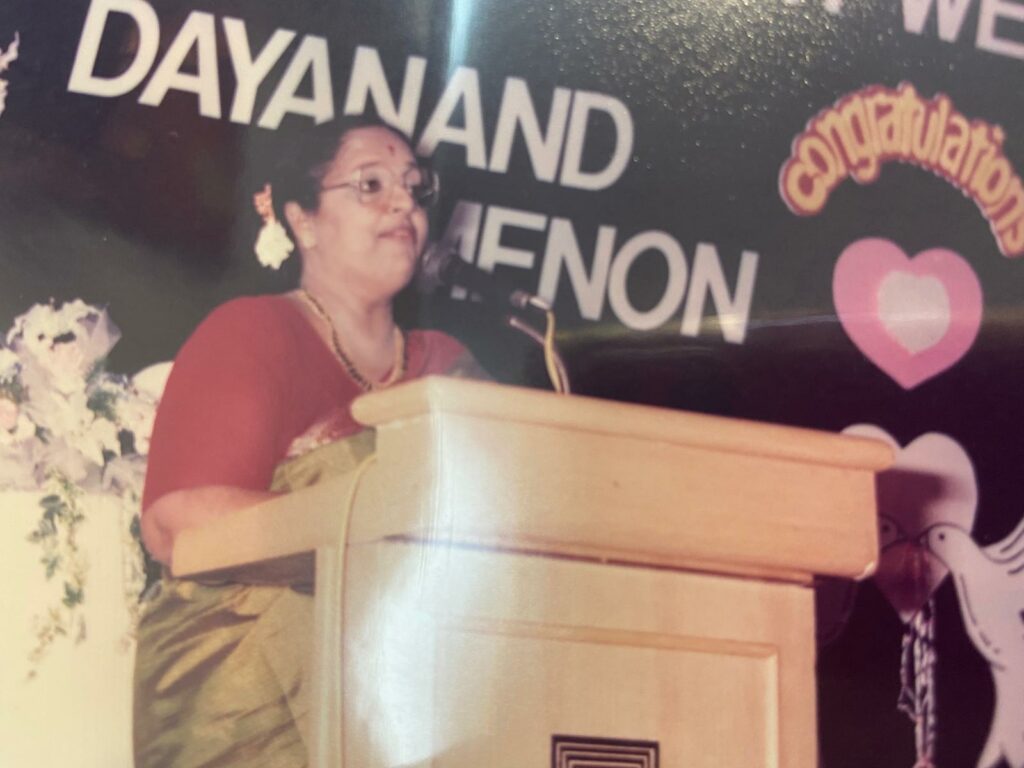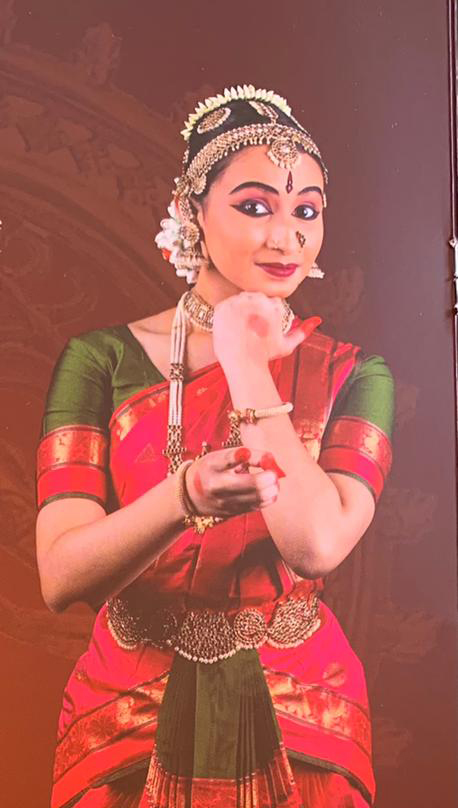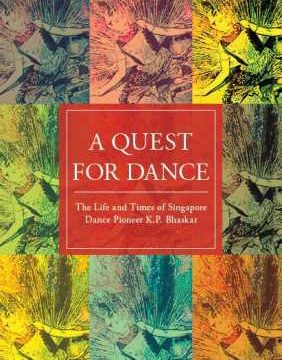Remembering Rukmini Devi Festival 2020

By Vidhya Nair The annual Remembering Rukmini Devi Festival is held in the last week of February-early March to coincide with Smt Rukmini Devi’s birth anniversary which is February 29th. I was privileged to attend the festival in 2020 [ my last trip overseas before the pandemic hit!]. The ambience at Kalakshetra at this time of year is unique, the weather is still cool and pleasant and unlike the Margazhi season, you get to meet and engage with many Chennai residents especially the young students and industry stalwarts. There was an eclectic programming of both music kutcheris in Hindustani and Carnatic featuring Ustad Amjad Ali Khan and his sons and Sanjay Subramaniam in concert. I attended the latter to get the experience of watching this vocalist with a strong following and fanbase. It was a packed auditorium and many students took their place on the stage where he delivered, with his excellent team of musicians, rare Tamil krithis which enthralled the audience. Many were familiar with the compositions and joined in putting talam or had their eyes closed in reverence to the music. Sanjay was a tour-de force performer with his masculine voice and command of the stage. I understood fully why he had so many fans. There was also a very engaging Villapattu performance as part of the opening ceremony in the morning. Beautifully spoken Tamil and the tongue-in-cheek humour was memorable and play on Rukmini Devi’s name and attributes were cleverly done. The other highlight show I witnessed was a ” presented by Sheejith Krishna, P T Narendran, Shijit & Parvathy Nambiar along with the Sahardaya Repertory. The attendance for this show featured all the who’s-who of Bharatanatyam from the Dhanajayans to Malavika Sarukkai, to Mythili Prakash. It was an electric performance which featured many of the signature poses, expressions and characters well associated with each of the dancers now household names themselves. There were ecstatic howls and screams of joys by many of the youngsters who sat at the front of stage and gallery upstairs. It was clear this was home turf and with the brilliant live musicians, you felt transfixed. An experience only possible at the Rukmini Arangam. Several nights also featured the Kalakshetra classics with episodes from the Ramayana presented in dance-drama. The space has a divine energy that transports you into the magical world of storytelling in its purest form and despite the large crowds that filled the Arangam, the easy chairs and high ceiling ventilation supports a relaxing and engaging evening. I also enjoyed the simple canteen food and the shop which featured their handmade Kalamkari collection, traditional dance sarees and a wonderful array of Kalakshetra publications. I left with a few copies of books by Rukmini Devi herself and other writings on the history of this famed institute.
About Exposure, Experience and Experimentation: Interview with Monica Sharma Menon and Dayanand Menon

By Vidhya Nair VN: Tell us about your background individually and together? MSM: I’m a 3rd Generation Singaporean of Punjabi descent. I have a younger sister who’s married and settled in Sri Lanka and my mother’s extended family still live in Medan, Sumatra where my mother is from. Dayanand is from a Malayalee-Menon family. As Singaporean Indians, I see that we have a shared history so even the diversity in our cultural nuances is easily accessed. My father was always interested in the arts and culture since he was young. My paternal grandfather was close friends with Dr Chotta Singh [ medical doctor and founder of the Ramakrishna Sangeeta Sabha – the first Indian Orchestra of Singapore] who ran a small clinic in Serangoon Road. Coincidentally, he was also known to the Menon doctors who ran Lily Dispensary & Clinic [ incidentally part of Dayanand’s extended maternal family]. My father used to perform with the Indian Music Party singing Hindi songs at Malay and Indian weddings in the late 1950s. He was also part of the Singapore Indian Film Arts and Dramatic Society and in 1964 was one of the judges for the saree queen contest which took place at the then brand-new National Theatre. [ Located on the slope of Fort Canning Park and River Valley, this was the first and largest theatre built in 1963 and demolished in 1986 to make way for building part of an expressway] DM: My parents came from Kerala. Mother from Palghat* and father from Thrissur. It was just me and my elder brother. In Singapore, I was born in the Moulmein Rise area and subsequently lived in Whampoa Drive from 1973-74, a few blocks away from Monica but we never knew each other then. The Whampoa Canal divided our area. We lived a simple life, no luxuries and went to neighbourhood schools. My father worked with the Royal British Airforce and my mother was a homemaker. It was a traditional Malayalee home but we brothers spoke in English. In retrospect, our family setup lent itself to us growing up with mastery in the English language although we lost out culturally as compared to our contemporaries. My parents were generally introverts and I only learned more about Amma’s early life post her death in 2015 where I was told that she was a vibrant youngster and extremely talented. Following her father’s lineage, she was often involved in theatre and performed on stage in her younger days. My parents weren’t active in the community and were relatively unknown but we were happy as private people. I was part of my primary school band, had an ear for music but I could never read the score. I think I was artistically inclined and took part in school plays but it was not nurtured or encouraged at home. I later trained to be a teacher then went on and studied in Canada. Upon my return I started with some relief teaching, which is how I met Monica at Towner Primary school. Later, I worked in the Big 4 Audit firms and today, I run my own accounting practice. * Dayanand’s maternal grandfather – K P Apukuttan Menon lived in Singapore from the early 1920s and worked as a court interpreter during British rule, raising his 5 children here before returning to Palghat, Kerala. He was a performing member of Dr Chotta Singh’s Ramakrishna Sangeeta Sabha orchestra playing the jalatarang in 1940 and was the founding President of Indian Fine Arts Society (later SIFAS) in 1949 serving 2 terms. When K P Bhaskar arrived in Singapore from Ceylon in 1952, it was K P A Menon who met him at the docks and arranged for him to teach dance to students at Kamala Club while he was in transit to go onward to Australia. This connection was made by K P A Menon’s elder brother K P Keshava Menon who was the High Commissioner of India to Ceylon and had met K P Bhaskar and helped him with his Australian visa. K P Bhaskar eventually stayed on in Singapore and formed Bhaskar’s Academy in 1952. K P K Menon lived in Singapore from 1925-1948, practiced as a barrister & was involved in the early formation of the Indian National Army and was also incarcerated by the Japanese in Singapore. He returned as a nationalist war hero to India and continued to be editor of the Malayalam newspaper he founded, Mathurbhumi till his death. His only son, the last King of Palghat M S Varma lived in Singapore to be a centurion, left for Calicut at the age of 102 and died in his niece’s home in Calicut in 2015.] VN: Monica, how did you come to become Maami’s student? MSM: My father believed that having an extra activity outside school was essential and my sister and I came to be sent for Sunday dance classes in the recreation centre at Farrer Park with K P Bhaskar in the late 1970s. After two years, my father felt we was not progressing and transferred us to Kamala Club to learn under Madhavi Krishnan. However, she eventually relocated to Australia and we went in search of another teacher. My father had heard of Mrs Neila Sathyalingam sometime in 1978, and had gone to Tanglin CC to meet her. So, on advice from his friend, Mr Ramachandran, who a was a fellow vocal & percussion, my father then enrolled us at Kamala Club, where Neila Maami had moved and this was ideal as it was close to Whampoa Drive where we lived. I began learning from Maami from 1981 and was her student for almost 36 years till 2016 before she took ill. While I took short breaks, during exams and my wedding and childbirth etc, I always went back to her for classes after that. VN: Share with us the role Mami played in your lives? MSM: I’ve come up with 3Es that epitomises what Mami did. Exposure, Experience and Experimentation. Reflecting back,
Nritya Kalanjali – a Bharatanatyam Arangetram

By Vaidehi Bodhankar Apsaras Arts was proud to present a live Bharatanatyam performance after a long spell in collaboration with Global Indian Cultural Centre (GICC) at the GIIS Auditorium on 27 June 2021. Vaidehi Bodhankar, 16 presented a unique repertoire which included 5 pieces in traditional original choreography. She performed the Keerthanam “Anandha Natamaaduvar Thillai” by Rukmini Devi Arundale and Abhang by Rama Vaidyanathan and Thillana by Kiran Subramanyam. Her teachers from Apsaras Arts include Seema Hari Kumar (this is her first student’s arangetram) Mohanapriyan Thavarajah and Gayathri Chachithanandar who ably taught and trained Vaidehi to deliver a self-assured and confident performance brimming with expressions and dance rigour. The arangetram was well attended by friends and well-wishers including Mr Edwin Tong, Minister for Culture, Community and Youth (MCCY), Member of Parliament for Pasir Ris- Punggol, Ms Yeo Wan Ling, Mr & Mrs Atul Temurnikar, Chairman and Co-founder of GIIS, Chairman of Apsaras Arts and GIIS Board Member, Ambassador K Kesavapany and Chairman of IAEC-Siglap South Community Centre Chairman, Dr Uma Rajan. Many guests remarked on the well-executed and organised program. A live audience also watched and give their feedback online. Aravinth Kumarasamy in his address mentioned the importance of the passing down of tradition and dance heritage through youngsters like Vaidehi and he acknowledged her bright future in learning and going beyond the first step she has just embarked with her milestone of an arangetram. Minister Edwin Tong also encouraged the learning of traditional arts and the vital role of culture in the betterment of our society.You can watch the performance here
A Quest for Dance – The Life and Times of Singapore Dance Pioneer K P Bhaskar

By Dr Wong Chee Meng, N Nedumaran This autobiography written in the voice of K P Bhaskar (1925-2013) and posthumously published in 2015 is an important read in the Indian performing arts space of Singapore. K P Bhaskar is the first Singaporean dance pioneer in modern Singapore and his contributions towards the propagation of dance outside of India is noteworthy. The book chronicles his early life in Kerala and how he came into contact with various dance forms especially Kerala Nadanam and Kathakali. His journey from Kerala to Madras to Bangalore to Ceylon and finally Singapore makes for riveting reading and provides historical context on the intertwined relationship between celluloid-dance-music which K P Bhaskar witnessed. He also names many individuals who helped and hindered him in his pursuit for dance and critiques his own community for their failings to support the arts magnanimously. The book should have had more photographs of his performances and greater insight on the continuation of his legacy and succession. There are many insights on his role and the Singapore approach to forge cultural identity through performing arts. The book raises important questions about the relationship between artistes, art companies, community and government. This is a must read for all Indian arts practitioners especially in Singapore.